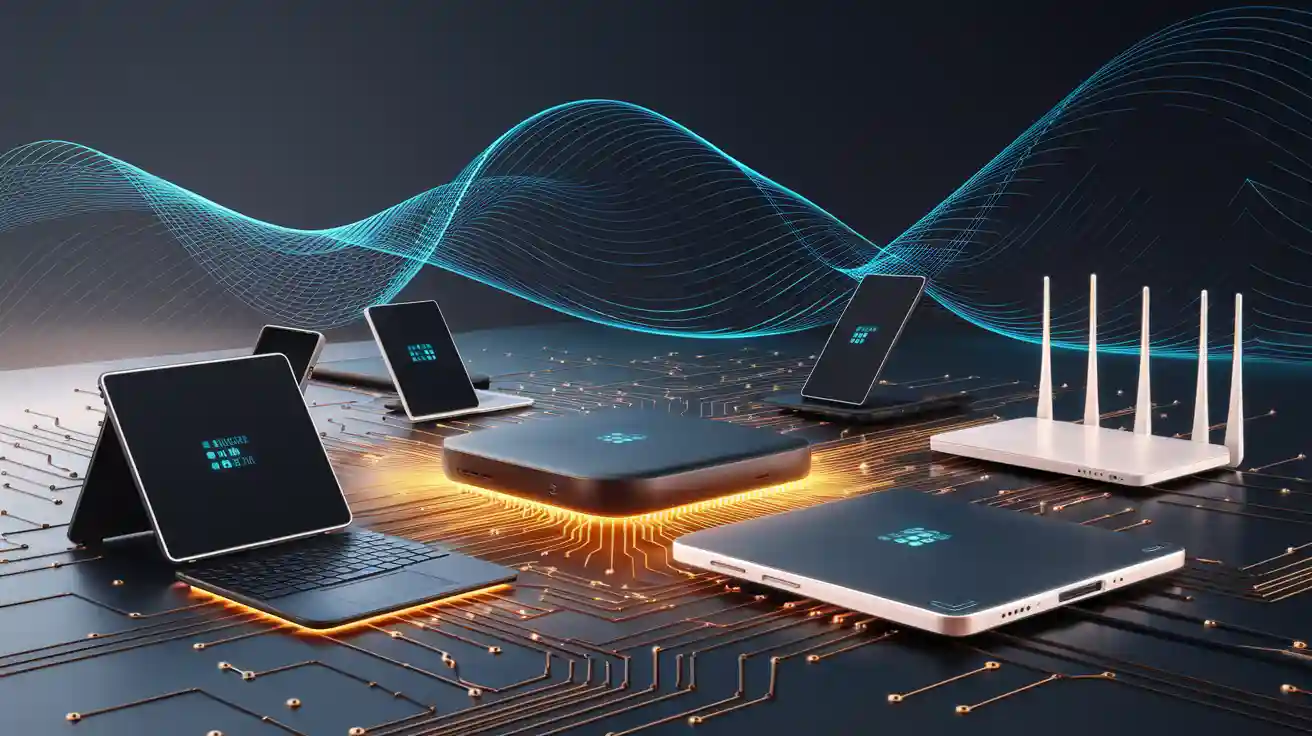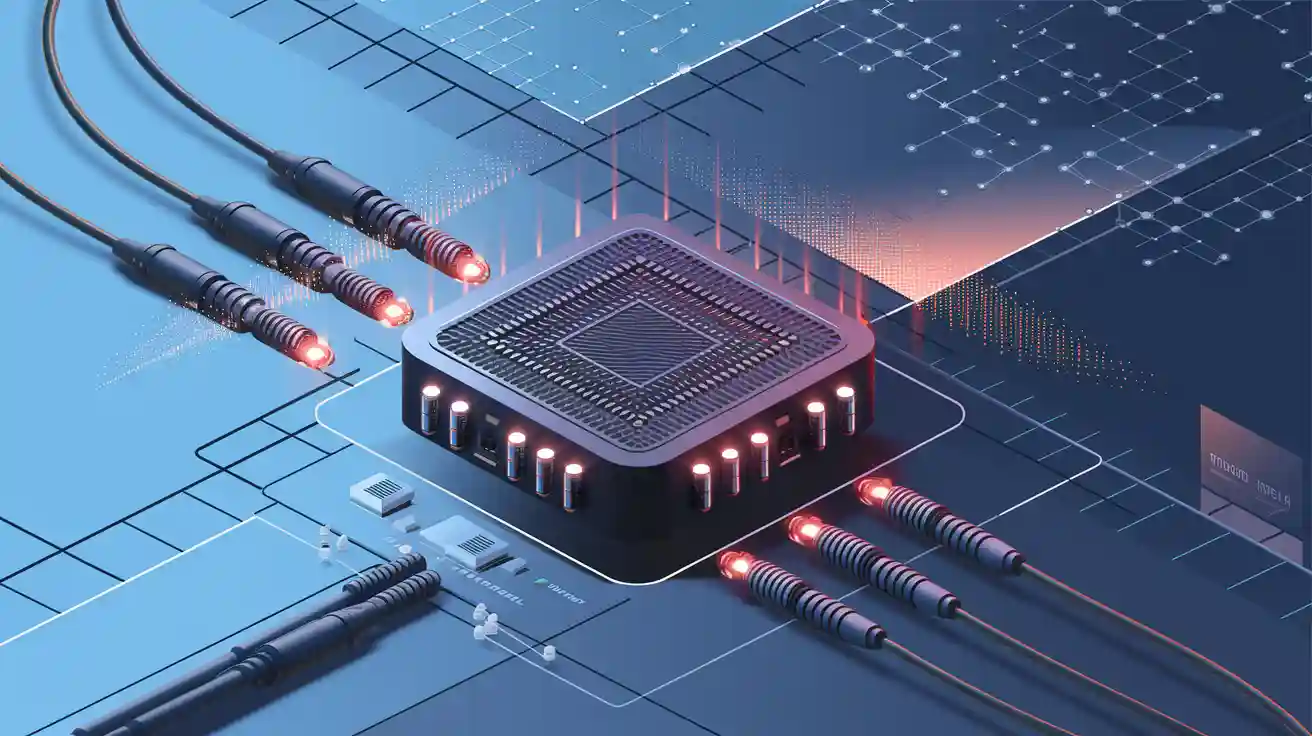
Electromagnetic Compatibility (EMC) is a fundamental concept in electrical and electronic engineering. It refers to the ability of electronic devices and systems to operate correctly and reliably in their electromagnetic environment, without introducing or being affected by unwanted electromagnetic interference (EMI).
In essence, EMC ensures that various electronic systems can coexist without disrupting each other — a critical requirement in today's interconnected world of high-speed communications, wireless technologies, and dense data centers.
Why Is EMC Important?
✅ Prevents EMI (Electromagnetic Interference)
While EMI refers to the actual electromagnetic noise or disturbance, EMC focuses on how well a device can suppress or withstand that interference. Devices with poor EMC may cause or suffer from malfunctions, degraded performance, or even hardware damage.
✅ Ensures System Reliability
In environments with many electronic systems — like servers, routers, or fiber optic networks — EMC helps maintain signal integrity and system stability, reducing data corruption and unexpected reboots.
✅ Meets Regulatory Requirements
Most countries enforce strict EMC standards (e.g., FCC, CE, CISPR). Non-compliance can result in legal penalties, product recalls, or delayed product launches.
EMC vs. EMI: What’s the Difference?
Term | Meaning |
|---|---|
EMI (Electromagnetic Interference) | The actual disturbance or noise that affects electronic systems. |
EMC (Electromagnetic Compatibility) | A device’s ability to function properly despite EMI, and not emit disruptive EMI itself. |
💡 Think of EMI as the "problem", and EMC as how well a device is designed to solve or prevent that problem.
What Causes EMC Interference?
EMC-related issues arise from both man-made and natural sources:
Switching power supplies
Mobile phones and base stations
Lightning and solar flares
Poor PCB layout or grounding
Inadequate shielding in cables or enclosures
These sources generate electromagnetic noise that may travel via conduction (wires) or radiation (through the air), impacting nearby systems.
Why Is EMC Crucial for Optical Modules?
Although optical modules primarily use light for data transmission, they contain electronic circuits (e.g., laser drivers, amplifiers) that emit electromagnetic radiation. Here’s why EMC matters in this context:
Signal Integrity: EMI can degrade data quality or disrupt optical signals.
Regulatory Compliance: Meeting EMC standards ensures market access.
System Compatibility: EMC reduces cross-talk between high-speed components.
Product Reliability: Better EMC means fewer failures and longer uptime.
🔧 LINK-PP offers high-quality optical modules and RJ45 connectors with EMC shielding solutions.
How is EMC Detected and Tested?
EMC Testing involves evaluating a product's emissions and immunity under simulated real-world conditions.
Key Techniques:
Radiated Emissions Testing: Using a spectrum analyzer and antennas.
Conducted Emissions Testing: Measuring EMI conducted via power or signal lines.
Anechoic Chambers: Shielded rooms for high-accuracy EMC evaluations.
💡 Testing helps manufacturers catch issues before products hit the market, ensuring smoother certification and better performance.
How to Solve EMC Issues?
Here are practical ways to reduce or prevent EMC problems:
🛡 Shielding: Use metal enclosures or EMI spring fingers (like LINK-PP’s Fiber Optic Cages &Connectors ).
⚡ Proper Grounding: Prevents the buildup of stray signals.
🔄 Decoupling Capacitors: Filters out high-frequency noise on power lines.
🧷 PCB Design Best Practices: Increase trace spacing, separate sensitive circuits.
🔌 Avoid Antenna Effects: Shorten and shield cables appropriately.
Conclusion
Electromagnetic Compatibility (EMC) is essential for the safe, reliable, and compliant operation of today’s electronics — from high-speed data centers to compact optical modules.
Whether you're a system integrator, product designer, or engineer, understanding and implementing proper EMC strategies is key to performance and compliance.
✅ LINK-PP offers high-performance RJ45 connectors and fiber optic cages with EMI shielding to help your systems stay compliant and interference-free.
👉 Visit l-p.com for more EMC-compliant networking solutions!
FAQ
What is the difference between EMI and EMC?
Electromagnetic interference (EMI) refers to the problem of unwanted electromagnetic energy. Electromagnetic compatibility (EMC) ensures devices can handle EMI without causing or experiencing disruptions.
How can you test for EMC compliance?
You can test EMC compliance using tools like spectrum analyzers, EMI receivers, and anechoic chambers. These tools measure emissions and immunity under controlled conditions.
Why is shielding important for EMC?
Shielding blocks electromagnetic fields, reducing interference. It uses conductive materials to contain emissions and protect devices from external electromagnetic radiation.


